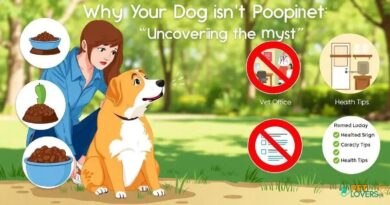What is: Xylitol ingestion and prevention
What is Xylitol?
Xylitol is a sugar alcohol commonly used as a sweetener in various food products, including sugar-free gum, candies, and baked goods. While it is safe for human consumption, it poses a significant risk to dogs. When ingested by dogs, xylitol can lead to severe health complications, including hypoglycemia (low blood sugar) and liver failure. Understanding the dangers of xylitol is crucial for dog owners to ensure their pets’ safety.
How Does Xylitol Affect Dogs?
When a dog consumes xylitol, it is rapidly absorbed into the bloodstream, causing a swift release of insulin from the pancreas. This insulin surge can lead to a dramatic drop in blood sugar levels, resulting in symptoms such as vomiting, loss of coordination, seizures, and even coma. The severity of the reaction depends on the amount ingested, making it essential for pet owners to be vigilant about xylitol-containing products in their homes.
Signs of Xylitol Ingestion in Dogs
Recognizing the signs of xylitol ingestion is vital for prompt treatment. Symptoms may appear within 30 minutes of consumption and can include lethargy, weakness, tremors, and excessive drooling. In more severe cases, dogs may experience seizures or collapse. If you suspect your dog has ingested xylitol, it is crucial to seek veterinary care immediately, as timely intervention can be life-saving.
Common Products Containing Xylitol
Xylitol is found in a variety of products that may be easily accessible to dogs. Common items include sugar-free gum, mints, toothpaste, and certain baked goods. Additionally, some peanut butter brands and other nut butters may contain xylitol as a sweetener. Always check ingredient labels before giving your dog any human food or treats to avoid accidental ingestion.
Preventing Xylitol Ingestion
Preventing xylitol ingestion starts with awareness and vigilance. Dog owners should educate themselves about the products that contain xylitol and keep them out of reach of pets. Designating specific areas for food storage and ensuring that all family members are aware of the dangers can help minimize risks. Additionally, using dog-safe alternatives for treats and snacks can further protect your furry friend.
What to Do If Your Dog Ingests Xylitol
If you suspect your dog has ingested xylitol, do not wait for symptoms to appear. Contact your veterinarian or an emergency animal clinic immediately. Provide them with information about the product consumed, including the amount and time of ingestion. Your veterinarian may recommend inducing vomiting or bringing your dog in for treatment, which may include intravenous fluids and monitoring for liver damage.
Long-Term Effects of Xylitol Ingestion
The long-term effects of xylitol ingestion can vary based on the amount consumed and the promptness of treatment. While some dogs may recover fully with no lasting effects, others may experience liver damage that can lead to chronic health issues. Regular veterinary check-ups and monitoring for any unusual behavior after an incident can help ensure your dog’s ongoing health and well-being.
Understanding Xylitol Toxicity Levels
The toxicity level of xylitol in dogs is relatively low compared to other substances, but it can still be dangerous. As little as 0.1 grams of xylitol per kilogram of body weight can cause hypoglycemia, while doses of 0.5 grams per kilogram can lead to liver failure. Understanding these levels can help dog owners make informed decisions about their pets’ safety and health.
Resources for Dog Owners
For dog owners seeking more information about xylitol and its effects, numerous resources are available. Websites such as the ASPCA Poison Control and the Pet Poison Helpline offer valuable insights and guidance on pet safety. Additionally, consulting with your veterinarian can provide personalized advice and recommendations tailored to your dog’s specific needs.
Conclusion
Being informed about xylitol ingestion and prevention is essential for dog owners. By understanding the risks associated with xylitol and taking proactive measures to prevent exposure, you can help ensure your dog’s health and safety. Always stay vigilant and prioritize your pet’s well-being by educating yourself about potential hazards in your home.




